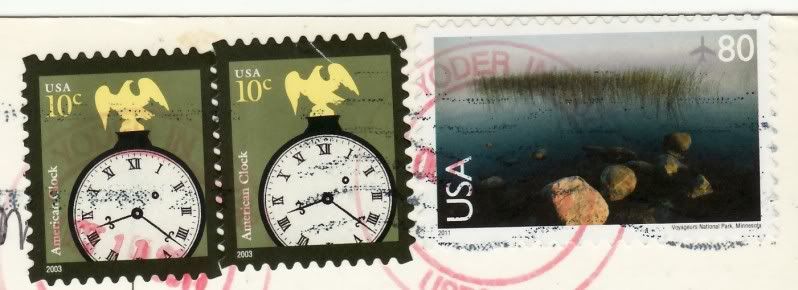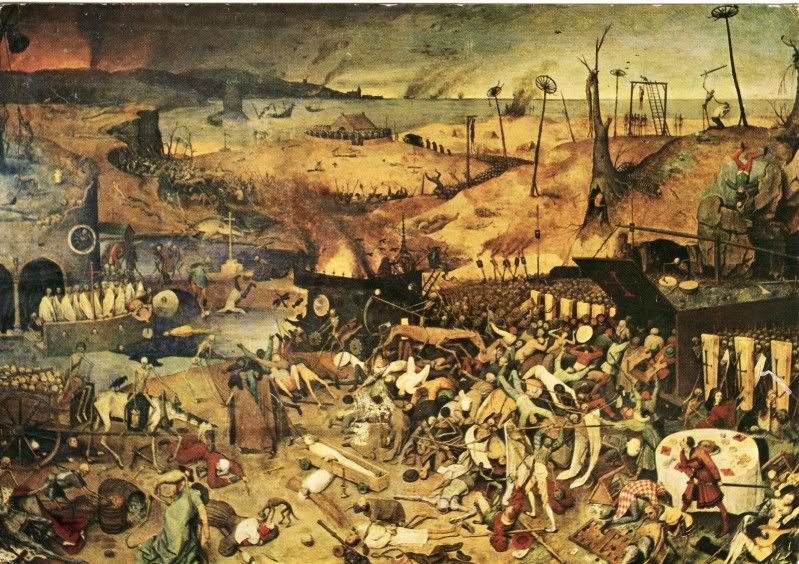Pieter Bruegel "El Viejo", "The triumph of Death"
Pieter Bruegel (Brueghel) the Elder (c. 1525 – 9 September 1569) was a Flemish renaissance painter and printmaker known for his landscapes and peasant scenes (so called genre painting). He is sometimes referred to as the "Peasant Bruegel" to distinguish him from other members of the Brueghel dynasty, but he is also the one generally meant when the context does not make clear which Brueghel is being referred to. From 1559 he dropped the 'h' from his name and signed his paintings as Bruegel.
The Triumph of Death is an oil painting on panel, painted c. 1562 by Pieter Bruegel the Elder. It is in the Museo del Prado in Madrid.
 The painting
is a panoramic landscape: the sky in the distance is blackened by smoke
from burning cities and the sea is littered with shipwrecks. Armies of skeletons
advance on the living, who either flee in terror or try vainly to fight
back. In the foreground, skeletons haul a wagon full of skulls, and ring the bell that signifies the death knell of the world. A fool plays the lute
while a skeleton behind him plays along; a starving dog nibbles at the
face of a child; a cross sits in the center of the painting. People are
herded into a trap decorated with crosses, while a skeleton on horseback
kills people with a scythe.
The painting depicts people of different social backgrounds – from
peasants and soldiers to nobles as well as a king and a cardinal – being
taken by death indiscriminately.
The painting
is a panoramic landscape: the sky in the distance is blackened by smoke
from burning cities and the sea is littered with shipwrecks. Armies of skeletons
advance on the living, who either flee in terror or try vainly to fight
back. In the foreground, skeletons haul a wagon full of skulls, and ring the bell that signifies the death knell of the world. A fool plays the lute
while a skeleton behind him plays along; a starving dog nibbles at the
face of a child; a cross sits in the center of the painting. People are
herded into a trap decorated with crosses, while a skeleton on horseback
kills people with a scythe.
The painting depicts people of different social backgrounds – from
peasants and soldiers to nobles as well as a king and a cardinal – being
taken by death indiscriminately.The painting shows aspects of everyday life in the mid-sixteenth century. Clothes are clearly depicted, as are pastimes such as playing cards and backgammon. It shows objects such as musical instruments, an early mechanical clock, scenes including a funeral service, and a common method of execution: being lashed to a cartwheel mounted on a vertical pole.

No comments:
Post a Comment